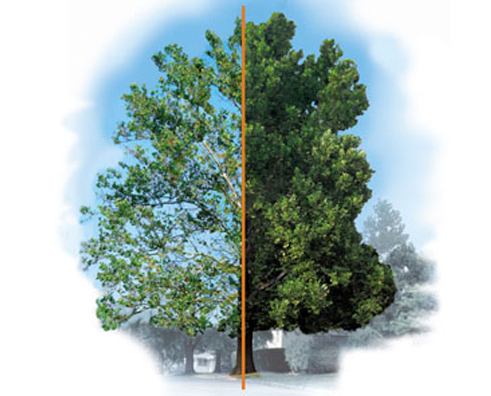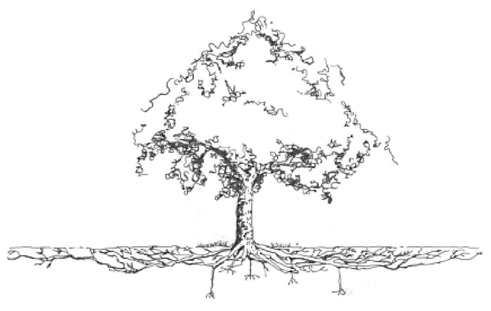The Science…
Know The Basics
Know The Basics
An Introduction
 Trees are the most valuable plants in a landscape, both in terms of monetary value but also with respect to the importance they provide aesthetically and functionally. Depending on the size, type, location and most importantly health of your trees and shrubs, the appraised value of your property could increase by up to 25%.
Trees are the most valuable plants in a landscape, both in terms of monetary value but also with respect to the importance they provide aesthetically and functionally. Depending on the size, type, location and most importantly health of your trees and shrubs, the appraised value of your property could increase by up to 25%.
Many urban and residential landscape soils are in poor condition, highly compacted and low in organic matter and soil “life”. They do not possess the ability to either establish or maintain healthy landscape plants through viable soil fertility. This deficiency forces trees and shrubs to grow under stress.
Stressed trees and shrubs can attract harmful insects and diseases and are much more susceptible to a wide range of other harmful agents.
Urban and residential trees often require yearly fertilization treatments. An improper soil pH makes it more difficult for tree roots to absorb needed nutrients.
Just like people, nutrient deficiencies in trees and shrubs can be avoided with the right and correct application of specific supplemental needs.
Plant soil biology and the soil/plant “relationship” is often overlooked and its importance is misunderstood.
Plants are living organisms that rely on partnerships with soil microbes to live, grow and thrive. In fact the more stressful the growing conditions, the more important these biological components become.
To the right is an example of a stressed tree before treatment and healthy after treatment.
Examples of Early Symptoms of Plant Stress

Later leaf development in the spring or early leaf drop in the fall as compared to other healthy trees or shrubs.
- A reduction in spring flowers in terms of number and how long they last
- A slow rate and low amount of annual growth on twigs and branches
- Smaller than normal foliage
- Off-color, thinning or yellowing foliage
- Increased amounts of dead branches and winter die-back
Roots are capable of growing great distances from trees as shown to the right.


PHOTOS COURTESY OF: SHIGO AND TREES ASSOCIATES

